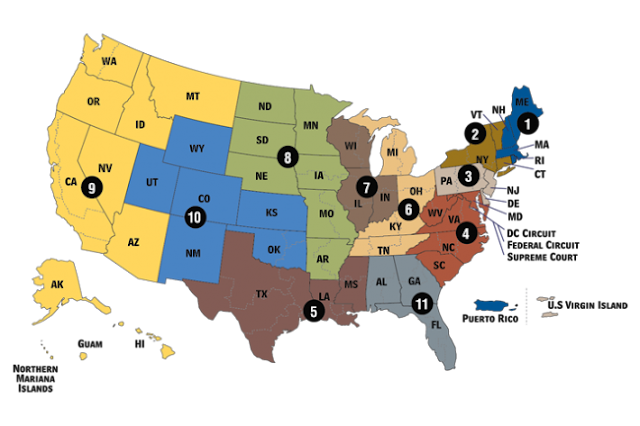Circuit Assignments/A Death Penalty Case

Map of the Federal Appellate Courts Did you know that the 13 federal circuit courts (11 numbered circuits plus the District of Columbia and the Federal Circuit) each get their own Justice? They do. And they have for a long time. Effective June 27, 2017 (basically at the end of the October 2017 term) the current circuit assignments were issued. Other than being required by statute ( 28 U.S.C. §42 ), why is this done? As our friends at SCOTUSblog succinctly put it: "Circuit Justices are responsible for ruling on certain motions arising from their assigned circuits, such as motions for extensions of time. In the case motions for a stay of execution or other motions relating to death penalty matters, the Circuit Justice ordinarily refers the motion to the Court as a whole, but takes the lead in recommending a disposition of the motion." Justices are quite often assigned a circuit that has some relevance to their background




